Commentary

THE INTERNATIONAL COMMUNITY is scrambling to salvage the 2015 Iran nuclear deal after the United States withdrew from it in 2018 and reimposed harsh sanctions on Iran. At stake is how much sanctions relief to offer in return for robust international oversight of Iran’s nuclear program. Blockchain technology allows us to fundamentally reframe this question: What if countries could offer real-time visibility of their nuclear programs in return for positive financial incentives?
Blockchain is an information management tool for governing large networks in low-trust environments. Uniquely, however, it can both facilitate and financially incentivize cooperation among nontrusting parties. This suggests a potential role for blockchain in normalizing habits of international cooperation, including by helping build trust in nuclear nonproliferation and disarmament agreements.
At least three attributes of blockchain are relevant in that regard.

THE RELIGIOUS FAITH of LGBTQIA+ people remains, in religion reporting, a puzzlement.
For those of us in the LGBTQIA+ family who were raised in religious—especially Christian—households, our churches have often demanded that we choose between our faith communities and our identities. Until recently, genuine LGBTQIA+ role models of faith were markedly rare. Too often, especially in evangelical communities, so-called role models were promoted because they publicly renounced their sexuality or identity in exchange for “faithful” pursuit of celibacy and gender conformity. Many of us can recount horror stories of religious trauma by those who rejected and condemned our essential selves. It’s not surprising that many of us run from religions dedicated to instilling self-hatred in us.
Yet a survey of LGBT adults in the United States shows they maintain relationships with faith and spirituality at rates similar to all Americans. Twenty percent of LGBT adults in the U.S. (compared to 25 percent of all Americans) say they attend religious services at least once a week, and 47 percent consider themselves religious. (Among all Americans, 41 percent say religion is “very important” in their lives.) If LGBTQIA+ people are engaged with their faith at similar rates to other Americans, why aren’t they centered as positive examples in religion reporting? Last December, Julia Métraux at the Poynter Institute reported on a lack of coverage in religion reporting on LGBTQIA+ communities and on the importance of queer reporters and editors in centering those stories.

Editors’ note: In April 2022, Mark L. MacDonald resigned as National Indigenous Anglican Archbishop and relinquished the exercise of ministry in the Anglican Church of Canada due to acknowledged sexual misconduct. His resignation was announced by the Most Rev. Linda Nicholls, archbishop and primate of the Anglican Church of Canada.
REPENTANCE, SAYS RABBINIC teaching, is one of seven things that preceded the creation of the universe. Without it, Creation could not survive. In our own time, we will witness the truth of this teaching in painful clarity.
The crisis of climate disruption is directly and intimately related to an unsustainable exploitation of Creation’s resources and the ecospheres that create those resources. By design, this exploitation only benefits a few, a few mostly shielded from the consequences of this obscene theft. The great mass of humanity is not shielded. People living in poverty, racialized minorities, and Indigenous peoples—those least responsible for this planetary breakdown—are the primary targets of climate injustice.
For some, it seems adequate to simply adjust their disposal of some of the waste and by-products of exploitive consumption. This has recently taken on an air of piety. Others look forward to technological and economic solutions that promise that the wealthy few can consume their way out of trouble.

BY NOW, MOST of us have been affected by problems with the “supply chain.” It started last year with shelves void of toilet paper, then morphed into a lack of other manufactured goods, including construction materials, cars, and medical equipment.
Other than this being a (sometimes serious) nuisance, why should people of faith take notice? From our perspectives—as a theologian and a developer of worker-owned cooperatives—the broken supply chain throws light on some of our deepest economic and political problems.
The current shortage of goods and services is often attributed to the COVID-19 pandemic. Its roots, however, are in an economic system designed to produce maximum profits for the few rather than the many by outsourcing production. The “few” are called shareholders and the “many” are those who work for a living. While many working people also own some shares, the bulk of profit in this system goes to those with the largest portfolios and majority positions. No wonder U.S. billionaires have gained more than $2 trillion since the pandemic began.

"THE FUTURE IS Black!” is a clarion cry at the entrance to “Mothership: Voyage into Afrofuturism,” an exhibit at the Oakland Museum of California. Its placement is a prickly reminder of the indomitable persistence of Black lives, and affirmation that in the imagined future they will not only matter but be present, alive, and thriving. This declaration of an imagined future of thriving Black lives must be thrust also into the importance of the Black Church and Black faith.
Much ink has been spilled on the misnomer that “God is dead”—with a caveat that the Black Church is dying—by scholars and practitioners alike. But, the monolithic nature of the Black Church has long been dispelled by prolific sociologists of religion such as W.E.B. Du Bois, C. Eric Lincoln, Cheryl Townsend Gilkes, and Anthea Butler, to name only a few. While the debate of the status of the Black Church rages on, the lived reality of the Black Church is that it is very much engaged and transforming as an institution in America and around the globe.
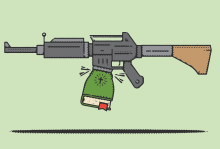
WAR-CULTURE IN THE United States is so pervasive and seamless that Americans struggle to see it, much less question it. More than $16 trillion has been spent since 2001 as “the calculus of 9/11 led to runaway growth in military spending,” according to the National Priorities Project. Forget Biden’s drawdown in Afghanistan and realistic proposals emphasizing diplomacy and economic cooperation. Secretary of Defense Lloyd J. Austin III declared in June that the $752.9 billion request in the FY 2022 military budget aligned with “the will of the American people.” What role do Christians play in this destructive reality?
Here is the problem: Religion and violence intertwine to fuel our ubiquitous war-culture. And in making war “sacred,” the death-dealing consequences are concealed from our consciousness.
Consider a common vehicle decal. A U.S. soldier stands silhouetted before an American flag shaped as angelic wings. The text reads: “Greater love has no one than this, that someone lay down his life for his friends” (John 15:13, ESV). Another popular meme says, “Remember that only two forces ever agreed to die for you—Jesus Christ and the American soldier.”
The decal verse is ripped out of context. Jesus’ soliloquy is on servant leadership, characterized by the loving washing of one another’s feet—not killing. Religious frameworks are hijacked to place a “sacred canopy” of meaning over the use of deadly force. For Christians, cognitive dissonance should abound. However, using the Bible to bless war is so common we hardly question it.

IN THE LEAD-UP to the 2020 elections, the Poor People’s Campaign: A National Call for Moral Revival organized a massive voter drive reaching 2 million poor and low-income voters in 16 states, including battleground states such as Arizona, Georgia, Pennsylvania, and Wisconsin. This effort, as shown in our October report, “Waking the Sleeping Giant: Poor and Low-Income Voters in the 2020 Elections,” contributed to higher turnout among poor and low-income voters who may be key to shifting the political terrain in 2022, 2024, and beyond.
According to our research, poor and low-income voters (households with income under $50,000 a year) made up approximately one-third of the voting electorate in 2020. They made up at least 20 percent of the total voting population in 45 states and Washington, D.C. In battleground states (those with a margin of victory of 5 percent or less in 2020), the numbers were higher, ranging between 35 and 45 percent of the total vote share. These findings cut against long-standing assumptions that poor and low-income people are apathetic about politics or elections. Instead, we found that they register at comparable rates as the rest of the country—and they vote, especially when their concerns are on the agenda.

OUR CLOTHES BEAR more than our personal style. Stitched into favorite garments is the suffering of those who made them.
From Bangladesh to Vietnam, millions of garment workers are exploited to feed the burgeoning demand for ready-made wardrobes. These workers endure unsafe working conditions and workplace abuse to meet the mounting quotas imposed by hungry clothing brands—all while being paid pennies per hour.
Garment workers’ labor conditions seized the attention of international media in 2013 when the Rana Plaza factory collapsed in Dhaka, Bangladesh, killing more than 1,100 people. This disaster accelerated the work of human rights organizations such as the Worker Rights Consortium, the Maquila Solidarity Network, and the Clean Clothes Campaign that were already collaborating withcorporations to implement safety protocols in the supply chains. This collaboration birthed the Accord on Fire and Building Safety in Bangladesh (the “Bangladesh Accord”), which was the first international agreement to include global brands, retailers, and trade unions in a legally binding framework.
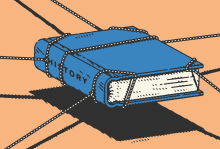
DESPITE THE FACT that critical race theory (CRT) is a complicated academic theory that some scholars use to examine disproportionate outcomes in the criminal justice system, school board meetings across the U.S. have erupted in passionate debates with parents demanding it be banned.
Ironically, CRT cannot be taught to children because it is not age appropriate for K-12—just as we would not teach advanced nuclear physics to schoolchildren. Yet the strategic placement by far-right activists of a narrative that CRT has crept into K-12 education is causing dramatic outbursts of racial anxiety. All this passion could be rerouted to address an important question that everyone cares about: What should children be taught about race and racism in the United States? This conversation, if done well, could actually move our society toward much-needed racial healing.

TWO YEARS AFTER likely origination in a wet market in China, the coronavirus SARS-CoV-2 and its mutations are spreading across the globe with terrible, long-term consequences. We now know what it’s like to have a global-scale crisis, one that disrupts everything.
Infectious disease specialists have been warning governments for a long time about such impending crises, and the World Health Organization (WHO) had encouraged countries to ensure that they met minimum standards for pandemic preparedness long before COVID-19. In 2018, the WHO detected outbreaks of six of its eight “priority diseases” for the first time. The rise of populist nationalism in recent decades has led governments to starve the United Nations and the WHO of the financial resources and authority they need to safeguard global public goods, instead of empowering these institutions to act. So, while pandemics are a result of our global interconnectedness, they are exacerbated by our lack of global cooperation.
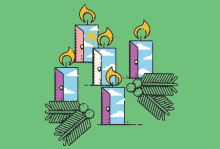
I SIT IN one of our robin’s-egg blue chairs on our front porch, one of my favorite places on earth. It has been a haven of peace, a slice of paradise amid the pandemic. It is dark. And late. And chilly. No one is around. Looking up between two branches of our mature red maple, I can see at least one star twinkling.
My mind’s eye turns to the stars in the desert. I dream of laying down, blanketed by the desert night, and staring up at the Milky Way in a reverie of wonder. Suddenly my thoughts shift to the shepherds on the night of Jesus’ birth who were minding their own business and about to turn in for the night. I imagine them comforted by the constant companionship of their night lights—the stars—and their sheep, whose bleating lulled them to sleep in the wilderness.
On this night—and really all throughout the year—I cannot stop thinking about how a mass choir of angels unexpectedly appeared to the shepherds to announce Jesus’ birth. Advent. Why appear to those looked down upon as poor societal nobodies? Why parade through and light up the night sky in concert for those the world deems to have little to no worth? Who would believe their testimony anyway?

IT MIGHT NOT be a violation of professional legal ethics to participate in the Roman Catholic Church’s campaign to escape financial responsibility for the genocide of Indigenous peoples in Canada and the United States. But it is a violation of Christian ethics. And for Christian attorneys, the latter should take priority.
The Catholic Church is not the only Christian denomination from which survivors of abuse in church-run residential schools are demanding justice. Episcopalian and Anglican, Methodist, Presbyterian, and other churches also ran residential schools in North America. However, the Catholic Church ran nearly three-quarters of the residential schools in Canada and more than 20 percent of the 367 Indian boarding schools in the United States. Since May, more than 1,300 suspected graves have been identified near five former Indian residential schools in British Columbia, Manitoba, and Saskatchewan. Four of those were run by Catholic institutions.But thanks to the Catholic Church’s lawyers, it has largely succeeded at avoiding financial accountability for its legacy of violence.

THE COVID-19 CRISIS has intensified food insecurity and hunger globally and exposed the failings of a profit-driven, industrialized agriculture and food system.
In August, an alliance of more than 500 African faith leaders and smallholder farmers delivered a strong message to the Bill and Melinda Gates Foundation: “The Gates Foundation’s support for the expansion of intensive industrial scale agriculture is deepening the humanitarian crisis.”
Faith communities and farmers want the Gates Foundation to stop funding the so-called “green revolution technologies” through the Alliance for a Green Revolution in Africa (AGRA). African faith leaders are witnessing the negative impact of industrialized farming to the land and the well-being of their communities. They are calling for a shift to sustainable and agroecological farming that works in local contexts for people and does not harm the land.

MY JOURNEY WITH the Uyghur people began in 1985 when I accepted a teaching position at Xinjiang University in Urumqi, a regional capital on China’s far western border. My wife and I made many friends during our seven years there. The Uyghur, an ethnic Turkic people of 12 million, are predominantly Muslim and live in the only Muslim-majority area in China, called the Xinjiang Uyghur Au-tonomous Region (by China) or East Turkestan (by the Uyghur and Kazakh peoples).
In 2017, we were greatly distressed to hear credible reports that the Chinese government was interning citizens in (what the government calls) “reeducation” camps. As many as a million people have been detained in 300 to 400 facilities in Xinjiang prov-ince, according to the Australian Strategic Policy Institute, including “political education” camps (part of a 70-year program of forced cultural assimilation), pretrial detention centers, and prisons. Detainees are subjected to torture, cultural and political in-doctrination, and forced labor. The U.S. Holocaust Museum says this state-sponsored violence meets the threshold for genocide and crimes against humanity. Friends and colleagues have disappeared.
In May, I met Uyghur poet, linguist, and human rights activist Abduweli Ayup on a Zoom call. Ayup spent 15 months in Chinese prisons for his defense of Uyghur linguistic culture. On our call, he told the terrible story of his failure to save from the camps his 30-year-old niece, Mihriay, who taught Uyghur children in the Chinese education system.

“HAY MÁS TIEMPO que vida” was my dad’s refrain every time I was stressed and weary. “There is more time than life.” His simple words had profound implications.
Being present to life is difficult. Life demands that we “rise and grind.” Reward comes to those who make the most of the time they’ve been given. Time is money. Time is a commodity we trade. The promise of life is the goal of all this grinding—or retirement, if we are privileged.
During the pandemic, I’ve pushed against beliefs that commodify time. I’ve cooked the foods that nourished my ancestors: tamales verdes, atole de tamarindo, and nopalitos. My senses have been awakened through mixing the nixtamalized corn flour with water and fat until it reached the right texture, peeling and deseeding each tamarind pod, cutting the nopal (cactus) and cooking it with a few tomatillo husks to remove the slime.
The preparation of these foods forces me to notice the rough spots on the cacti where thorns still make their home, to smell the acid scent of tamarind in the pulp clinging to my fingers; it invites me to play with the unruly dough that believes its place is on top of the corn husk and not inside. If death shows up in separation, life sprouts in connection.
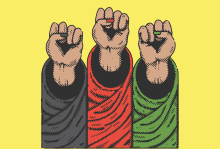
AFGHANISTAN HAS BEEN in conflict for more than 40 years. The former Soviet Union sent in more than 150,000 troops on Christmas Eve 1979 and left 20 years later. The U.S. began a massive bombing campaign in October 2001, the first stage of the war to oust the Taliban. Now, 20 years later, the U.S. has withdrawn the last American troops. It is hard to find a single Afghan, including myself, who hasn’t been a victim of the ongoing conflict.
As Afghans know, parties in these battles change, but the outcomes—devastation and killings—remain the same. Ordinary Afghans, as we have seen with the recent Taliban resurgence, pay an immeasurable price. They are killed, bombed, displaced, and disabled. However, the voices of these ordinary people are rarely heard. Perhaps they no longer raise their voices. What speaks loudly is their pain and sorrow.
Despite numerous formulas and prescriptions for ending bloodshed and oppression in Afghanistan, violence remains. Most solutions were formulated by the elite class. They are the ones in the driver’s seat. They make decisions as they please. The wishes of ordinary Afghans are nowhere to be found.

THE SOUTHERN BAPTIST CONVENTION has long been a bellwether for conservative politics. At its annual gathering, controversial resolutions often forecast the upcoming battles of our nation’s culture wars. For too many in the denomination, soul competency has given way to partisan loyalty. This transformation began in 1979 when Paul Pressler and Paige Patterson launched an unprecedented, highly orchestrated campaign to persuade members to vote for a fundamentalist SBC president, who then began a cascade of fundamentalist appointments at every level of the denomination. Being “moderate” on abortion, gender roles, and gay rights, among other issues, became deal breakers. Those who found themselves on the outs with fundamentalist extremists were, as they have described, exiled.
Gendered hierarchies are fertile ground for sexual abuse, and in 2018 Patterson was fired as president of Southwestern Baptist Theological Seminary for mishandling sexual assault investigations. The toppling of this fundamentalist leader reverberated through the SBC, and a growing chorus of voices, most notably former member Beth Moore, called on the denomination to address this issue as well as restrictions placed on women in ministry. And the politicization of critical race theory, which David Theo Goldberg of the Boston Review called the “weaponization of colorblindness,” also perched high on the SBC agenda. Both issues figured prominently in the choice of a new SBC president this spring.
Candidate Ed Litton of Alabama conceded that there should be conversations about structural racism and investigations into the denomination’s handling of sexual abuse, while Mike Stone of Georgia doubled down on the fundamentalist position championed for years by Patterson and his acolytes. Thus, the 2021 election of the SBC president was seen as a referendum not only on these issues, but also on the Trumpian politics of political extremism and absolutism that underscore them. Stone took an early lead in the voting, which signaled to many observers that the bond between the SBC and Trump’s Republican Party would prove unbreakable. Moderates breathed a sigh of relief when Litton emerged as the winner; headlines noted that the SBC had pushed back against the denomination’s version of Trump extremism.

INVISIBLE FORCES ARE disrupting housing markets in most metropolitan areas, fueling the most acute housing crisis in a generation. As pandemic protections are lifted, many communities are anticipating waves of evictions and foreclosures. By one estimate, the U.S. has a shortage of more than 5.5 million units of housing.
Among these invisible forces is an explosion in short-term rentals, a shift to corporate ownership of rental housing, and a plague of global billionaires looking to park money in U.S. real estate markets. Put this on top of inequality-fueled gentrification and many cities have a full-blown affordability and supply crisis.
In some communities, thousands of apartments and homes are being snatched up by anonymous corporations. Now a growing number of community leaders are pressing to know: Who is buying our cities?

IN JUNE, THE SUPREME COURT held that a Catholic agency can exclude same-sex couples from its government-contracted foster care program, despite a city policy banning LGBTQ discrimination. Assertions of religious freedom carried the day in the narrow ruling of Fulton v. City of Philadelphia; at the same time, broader precedent remains, requiring religious groups to respect generally applicable anti-discrimination laws. The court deferred the deeper challenge of how to square vigorous claims of religious liberty with hopes of inclusion for LGBTQ people.
As people of faith, how do we make sense of these competing claims—for equality and nondiscrimination, bedrock human rights principles, and for religious freedom? For guidance, Christians can look to our own record on religious freedom, theological insight on human rights, and, above all, the ethics of Jesus and Paul.
Let’s begin by affirming that religious freedom deserves its place in the inner sanctum of basic rights. It is a hope that once emboldened persecuted communities to flee Europe and helped inspire the allied struggle against fascism. It remains indispensable for religious minorities the world over—like the Iranian Christian seminary student who fears grave persecution, or Sikh and Jewish communities suffering violence in this country.
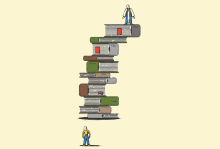
I REMEMBER HER green dress. She stood in center stage, shoulders barely clearing the pulpit. She was preaching, except the Southern Baptist Church didn’t call it preaching. As a missionary returning from two years in Jordan in the mid-1980s, Martha Bumpas was giving her “testimony.”
Bumpas was, I think, the first woman I heard speak from the pulpit. She sounded so full of hope. As her friendship with my family deepened, God’s calling on her life deepened too. She began to pursue a calling into full-time ministry.
Her timing proved poor. In 1988, Dorothy Patterson delivered a paper at the annual meeting of what was then the Southern Baptist Historical Association that articulated a “biblical theology of women’s submission to men’s authority,” as historian Elizabeth H. Flowers tells it. Patterson’s sharp wit—despite her historically inaccurate argument—won the Southern Baptist day. Ten years later she won again, this time on the floor of the Southern Baptist Convention (SBC) annual meeting as she fought for the inclusion of language on women’s “gracious submission” in the Baptist Faith and Message, the repository of doctrine for Southern Baptists. Patterson succeeded in narrowing options for SBC women like Bumpas: Baptist seminaries deterred women from master of divinity degrees and, by 2000, pushed them out of preaching classes. Only men were deemed biblically fit to serve as pastors.